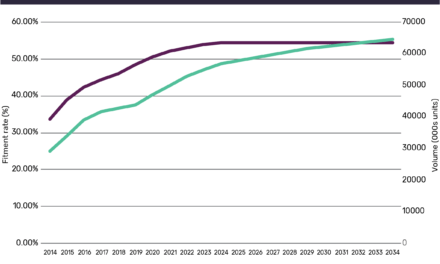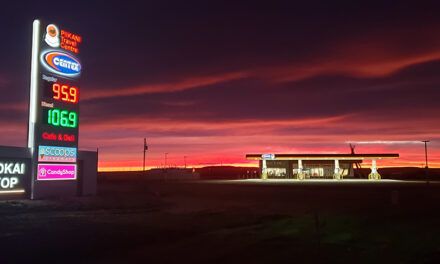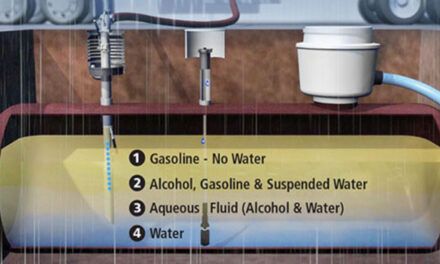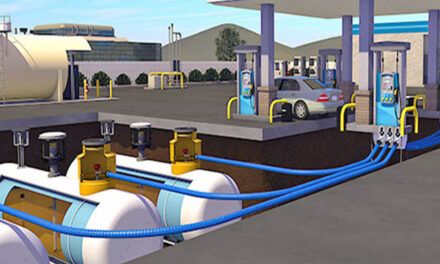
Dealing with Fugitive Fuel Drops: Drain Them, Don’t Retain Them
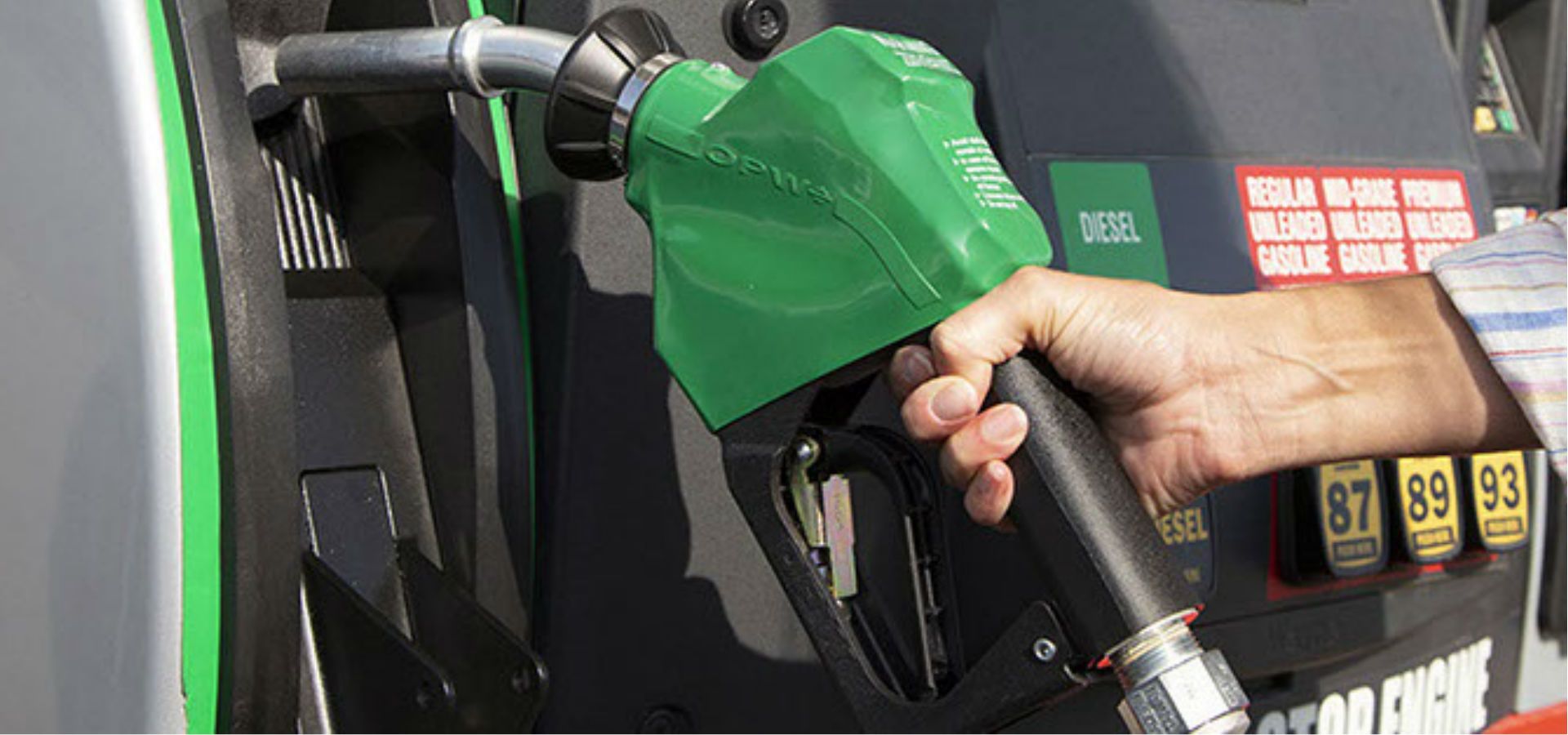
Dealing with Fugitive Fuel Drops: Drain Them, Don’t Retain Them
It was in 1915 that the Cheek-Neal Coffee Company of Nashville, TN, introduced the iconic “Good To The Last Drop” marketing slogan for its Maxwell House brand of coffee. It has been at least that long that fuel retailers have searched for ways to capture and control those precious – and problematic – last drops that remain in the spout of the fuel nozzle when the vehicle-fueling process is completed.
Though those drops are small, they can present problems for drivers, retailers and the environment if they are allowed to escape to the atmosphere or remain inside the fuel spout at the end of the fueling operation.
The Driver
- Those fugitive drops have been paid for. Any fuel that dribbles out of the nozzle and not into the fuel tank cannot be used to power the vehicle.
- Gasoline or diesel fuel, which are hazardous liquids, could potentially get on the driver’s hands, clothes or shoes and would need to be washed off immediately Fuel that runs down the side of the vehicle can affect the vehicle’s finish
The Retailer
- Spilled fuel, no matter what amount, may create a potential fire-hazard risk for the fueling site
- Spilled fuel will stain the concrete around the fuel island, creating an unattractive and unwelcoming fuel site and less-than-desirable brand image
- Fugitive fuel will also gather on the nozzle trigger, hand insulator and fuel guard, making it dirty and unappealing for customers to handle
- Excessive amounts of spilled fuel, or the accumulation of spilled fuel over time, will eventually necessitate a cleanup program and, along with it, associated costs and pump-island downtime
- Regulations from the U.S. Environmental Protection Agency (EPA) and Environment and Climate Change Canada (ECCC) set limits on the amount of Volatile Organic Compounds (VOCs) that can be released from fueling sites, with out-of-compliance sites subject to fines or shutdown
The Environment
Any VOCs that are emitted go right into the atmosphere, potentially compromising breathable air
Allowing the emission of fugitive VOCs runs counter to the growing mission of making the fueling process greener, cleaner and more environmentally friendly
Admittedly, over the years nozzle manufacturers have made many significant advancements in the design and operation of their products, with the goal, in part, of ensuring the elimination of fuel loss or retention at the conclusion of the fueling process.
In recent years, manufacturers have played with the idea of making fueling nozzles dripless, and all but one has settled on a specific nozzle-spout design to accomplish this task. This design uses gutters, ripples and dams inside the spout to create liquid-catching surfaces that ostensibly prevent the fuel from dribbling out of the nozzle. While this design is effective in keeping those fugitive drops of fuel from reaching the ground, vehicle and the driver’s hands or clothes, the fuel that is retained in the nozzle poses an environmental hazard. The inherent problem with this design is that when the nozzle spout is returned to the dispenser cradle, it is filled with fuel (in most cases, more fuel than what would have traditionally dripped on the ground). This captured fuel is now exposed to the atmosphere as the nozzle sits in the cradle, which creates VOC-heavy emissions as the fuel evaporates and escapes into the environment.
Feeling that there still had to be a better way to more competently deal with those final pesky drops, OPW Retail Fueling, Smithfield, NC, began looking to create a new type of nozzle that would not require any liquid-catching surfaces. The result is the revolutionary 14 Series Fueling Nozzles.
The features of these new nozzles are many:
- True Dripless Technology that offers a free-draining spout with no dams, gutters or hidden reservoirs to capture fuel for later release into the atmosphere
- A specially designed interlock system, available on some models, that prevents fuel from flowing unless the spout is fully inserted into the vehicle’s fill pipe (this is a California Air Resources Board requirement)
- A FlowLock shutoff system that halts fuel flow when the nozzle is tipped up or falls out of the vehicleAccu-Stop double-poppet, to-the-penny flow-control technology
- Comfortable two-piece NEWGARD hand insulator
- UL and cULus listed
- CARB approval pending (for models that feature a special interlock system)
Conclusion
For many decades, the loss or retention of fuel at the completion of the vehicle-fueling process has been chalked up to being one of those inescapable costs of doing business. Today, this no longer has to be tolerated as fuel prices remain high and the calls for greener, cleaner, safer and more environmentally friendly fueling processes increase. To the rescue comes an innovative fuel-nozzle design that helps ensure that the days of drops of fuel falling to the ground or being retained in the nozzle are over – with many ancillary benefits created for the driver, the retailer and the environment.

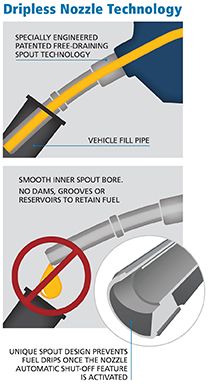
THE MECHANICS OF IMPROVED FUEL CAPTURE
- To eliminate the waste, cost and environmental concerns of uncaptured fuel, OPW Retailing Fueling, Smithfield, NC – the company that, in 1949, invented the automatic shut-off dispensing nozzle valve – has developed the new 14 Series family of fueling nozzles. These innovative nozzles feature patented and patent-pending free-draining spout technology that is designed to produce a cleaner, greener fueling experience.
The new 14 Series nozzles are available for gasoline and specific diesel models:
- 14BP Automatic Dripless Nozzle: A no-pressure/no-flow self-service nozzle that has a free-draining spout with no dams or hidden reservoirs, which prevents the fuel from dripping onto the driver’s vehicle, hands and clothing. For use with gasoline and up to 10% ethanol blends.
- 14E CARB ECO True Dripless Nozzle: A no-pressure/no-flow self-service nozzle that uses a special interlock system inside the bellows to activate fuel flow, which allows it to meet California Air Resources Board (CARB) fuel-capture standards for dripless nozzles. Features a free-draining spout and no dams or hidden reservoirs for use with gasoline and up to 10% ethanol blends.
- 14C Diesel Capture Technology: Has a specially designed Integral Diesel Capture Chamber and Environmental Drip Guard. The nozzle captures any diesel fuel inside and outside the spout when the nozzle is returned to the cradle, creating a cleaner and safer fueling experience. This diesel-capture chamber also allows the nozzle’s venturi to evacuate the captured fuel and reintroduce it into the fuel stream. Approved for diesel blends up to B20.
Please visit opwclean14.com to learn more about OPW Retail Fueling’s complete portfolio of !4 Series Fueling Nozzles.
Ed Kammerer is the director of Global Product Management for OPW, based in Cincinnati, OH, USA. He can be reached at ed.kammerer@opwglobal.com For more information on OPW, please go to OPWGlobal.com






